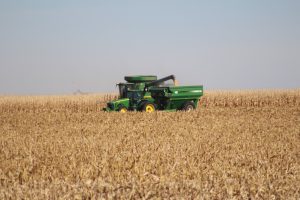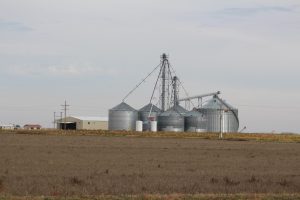CoBank Quarterly: High Interest Rates, Strong U.S. Dollar Taking an Oversized Toll on Agricultural and Rural Economies

The combination of high interest rates and a strong U.S. dollar is beginning to take a disproportionate toll on rural industries like agriculture, forest products, mining and manufacturing. Most international transactions are still conducted in dollars, and a strong dollar makes U.S. exports more expensive and imports cheaper. That disproportionally hurts the backbone of the rural economy, according to a new quarterly report from CoBank’s Knowledge Exchange.
While the U.S. economy is outperforming expectations, the rest of the world—Europe and China in particular—has fallen short. As a result of the U.S. economic position relative to other countries, the dollar has gotten much stronger than previously anticipated. The expectation that interest rates will remain high for the foreseeable future has also contributed to the strengthening dollar.
“The challenge for agriculture and other rural industries that rely heavily on global markets is their export partners simply can’t afford to buy U.S. products,” said Rob Fox, director of CoBank’s Knowledge Exchange. “When you combine the loss of exports with a general slowdown in the U.S. economy, it’s a double whammy for many businesses operating in rural America.”
The disruptive geopolitical and economic events in recent years resulted in the historically irregular situation where commodity prices and the dollar were both moving upward in tandem. But those events are now fading as market drivers. The fundamental inverse relationship between the broad array of commodities and the dollar has largely returned.
Farm Bill negotiations will take a back seat while the House of Representatives attempts to select a new speaker and Congress works to pass its annual appropriations bills before the Continuing Resolution expires on Nov. 17. The most likely outcome is an agreement by year-end to extend the current Farm Bill by a few months or up to a year or more.
Fertilizer prices continued to weaken in the third quarter. Anhydrous ammonia and potash prices fell 30% and 15%, respectively. Prices for natural gas, used as a both feedstock and production input, dropped by about 7%. The fall fertilizer application season should be reasonably normal for regions that are seeing an orderly harvest. While the outlook for the 2024-25 planting season is cloudy, less fertilizer usage is expected as acres shift from corn to soybeans.
Fuel ethanol production was very strong during the third quarter, averaging 16.1 billion gallons compared to 15.4 billion during the second quarter of 2023. A strong summer travel season and attractive fuel ethanol prices were the key demand drivers. Profitability was also favorable, exceeding 50 cents per gallon vs. 20 cents per gallon in the year ago period. Renewable diesel and other biofuel capacity continues to grow, having increased by 26% or 800 million gallons since January 2023.
The U.S. Supreme Court decision to uphold California’s Proposition 12 spurred a rally in the pork market. Pork cutout values increased 41% from May-July, countering weak prices earlier in the year. Hog prices also rallied, with nearby hog futures climbing 36% from late May through early August. With production rising and seasonal interest fading, markets have since cooled. USDA’s latest hogs and pigs report suggests that while the industry is making efficiency gains, production levels will continue to teeter on meager profit expectations.
Chicken markets were tepid at the beginning of the third quarter. Breast meat values were unseasonably low and wings hovered around $1 per pound. While elevated consumer price points may have contributed to soft disappearance, the burden of elevated surplus was difficult to offload. Severe margin compression combined with high input costs caused some producers to reconsider longer-term production goals. Any growth will be limited given the announcements of six plant closures this year.
Strong cheese production and slowing dairy exports combined to pull Class III milk prices down to a paltry $13.77 per cwt. by midsummer. With ample cheese and strong milk production, Midwest spot loads of Class III milk bottomed out much lower than the five-year average. Faced with low milk prices and high feed costs, dairy farmers sent more cows to slaughter to take advantage of record-high beef prices. Futures markets indicate that the final quarter of the year could be much better, with projected Class III milk prices at $17.30 per cwt. The biggest wild card for milk prices is China, the world’s leading dairy-product importer, which is facing an economic downturn.
India’s export ban on white rice shocked world rice markets in July. Asian rice prices quickly climbed to a 12-year high. World buyers raced to secure supplies from other major exporters like Thailand, Vietnam and Pakistan. However, the price response in the U.S. has been muted with domestic rice production making a major recovery from last year’s small harvest. With much of India’s exportable rice inventory now offline, new export business has materialized for U.S. exporters.
Extreme drought and heat in Louisiana and Texas severely crimped harvest expectations for two of the largest sugarcane producers in the U.S. Yields in the region are expected to fall to the lowest level in 16 years. USDA dropped its national sugarcane production forecast to 3.758 million short tons raw value, down 8% year-over-year. Sugarbeet harvest is expected to climb as key growing states have benefited from ideal growing conditions. So far, a slowing economy has had little impact on total sugar consumption in the U.S.
U.S. imports of fruit and berries shrank to 915,000 tons in July, a 15.2% drop versus the previous month However, fruit imports are well on track to continue their decades-long trend of steady annual increases, led by Mexico, Guatemala and Costa Rica. USDA has revised down expectations of imports of fresh vegetables, largely due to hurricanes impacting growers in Mexico’s western and north-central regions. In 2022, Mexico supplied 51% of fresh fruit imports and 69% of fresh vegetable imports into the U.S. (by value).
Telecommunication companies are continuing the aggressive pursuit of fiber network assets. Competition to capture the first-mover advantage for fiber-to-the-home service is intensifying. Studies have shown that first-to-market fiber providers in rural and underserved markets garner the majority of the market share and typically see less competition. Gaining access to capital quickly can make the difference in being the first market entrant. That is leading operators to get creative in their approach to raising capital, with some issuing bonds backed by their existing fiber networks and customer contracts.
Read The Quarterly. Each CoBank Quarterly provides updates and an outlook for the Macro Economy and U.S. Agricultural Markets; Grains, Biofuels and Farm Supply; Animal Protein; Dairy; Cotton and Rice; Specialty Crops; Food & Beverage industries and Rural Infrastructure.









